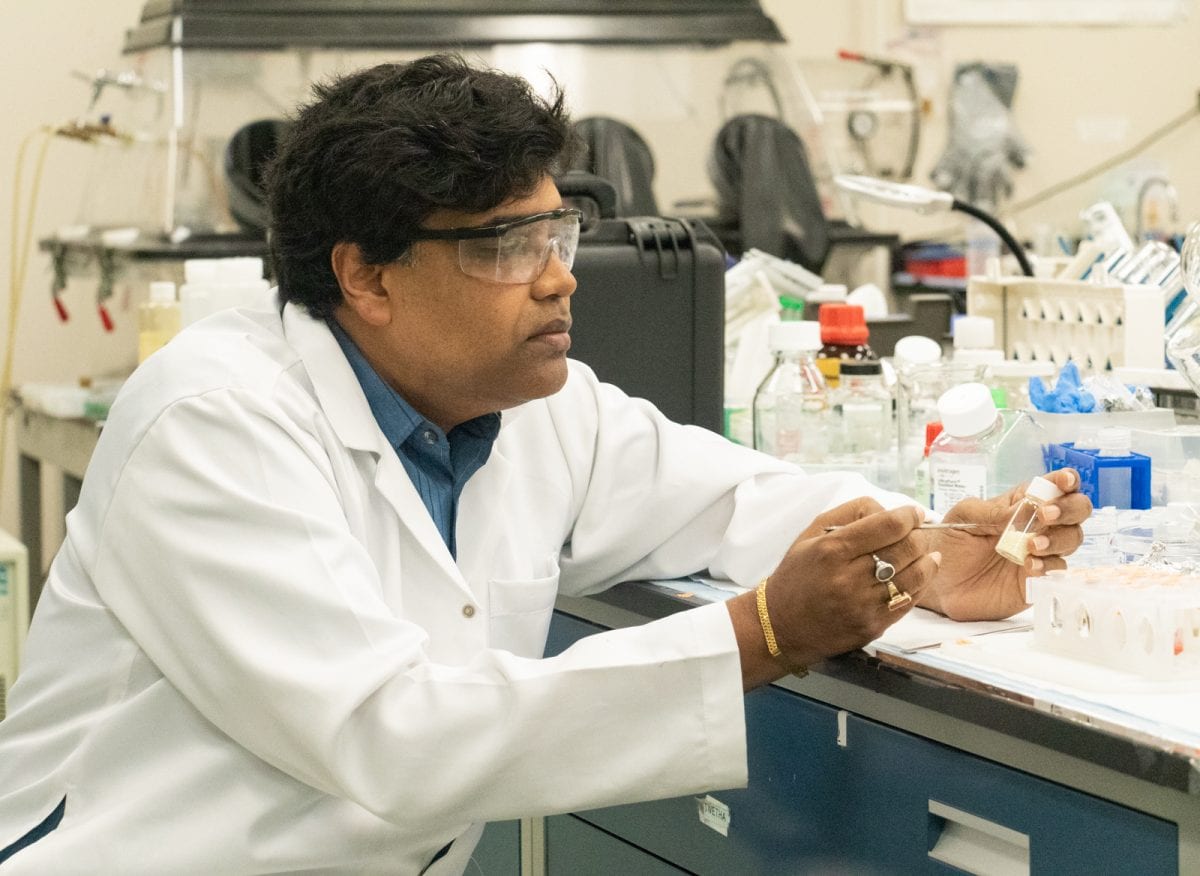
[Image above] Sudipta Seal, professor and chair of University of Central Florida’s Department of Materials Science and Engineering. Credit: Karen Norum, UCF Office of Research
If you have ever been around a loved one who is going through radiation treatment for cancer, you know it’s not a pleasant experience for him/her. Although radiation therapy can kill or slow cancer cell growth, the National Cancer Institute says it could also damage nearby health cells.
Radiation also can affect astronauts in space. Our galaxy is full of various types of particles and cosmic rays that can expose astronauts to a number of risks for cancer, degenerative diseases, and other illnesses, according to NASA.
But in new research at the University of Central Florida, scientists have found that an antioxidant could substantially reduce damage to cells exposed to radiation.
Led by ACerS member Sudipta Seal, professor and chair of UCF’s Department of Materials Science and Engineering, researchers discovered that treating tissues and DNA in mice with cerium oxide significantly decreased damage from radiation exposure, compared to a control group of mice that received no treatment. Their findings could be important in lowering the risks of radiation exposure astronauts face in space.
“The research is important in many ways besides space travel,” Seal, who coauthored the study, explains in a UCF news release. “This type of material not only has a good synergistic effect to sensitize cancer cells but also to protect the good cells from radiation while you are doing therapy for treating cancer.”
When the body is exposed to radiation, a chemical reaction causes molecules in the body to lose electrons, turning them into free radicals that can damage cells and especially DNA. Antioxidants are the heroes that give molecules the electron they lost in that reaction.
Cerium oxide is typically used as a powder to polish glass and other hard materials, but at the nanoscale it possesses strong antioxidant properties, according to the release.
Seal and his team tested cerium oxide nanoparticles over a one-month period on male mice that were exposed to radiation, according to the paper’s abstract. When they examined the tissues from the mice, they showed a nearly 13% decrease in tissue damage compared to the control group that received no cerium oxide nanoparticles.
Seal has been investigating cerium oxide nanoparticles for many years, in radiation-induced cell damage and in mitigating radiation-induced lung injury. This latest research illustrates cerium oxide nanoparticles’ potential for protecting DNA, which would be important not only for astronauts, but for cancer patients going through radiation therapy.
The team’s next steps in the research is human trials, Seal says, but they need the funding first. “A nanoceramics, named nano ceria, used as a catalyst finds its way as an antioxidant,” Seal writes in an email, “which could be used in a wide variety of biomedical applications—one in the area of radio-protection.”
The paper, published in Nanoscale is “Engineered nanoceria cytoprotection in vivo: mitigation of reactive oxygen species and double-stranded DNA breakage due to radiation exposure” (DOI: 10.1039/C8NR04640A).
Author
Faye Oney
CTT Categories
- Nanomaterials


